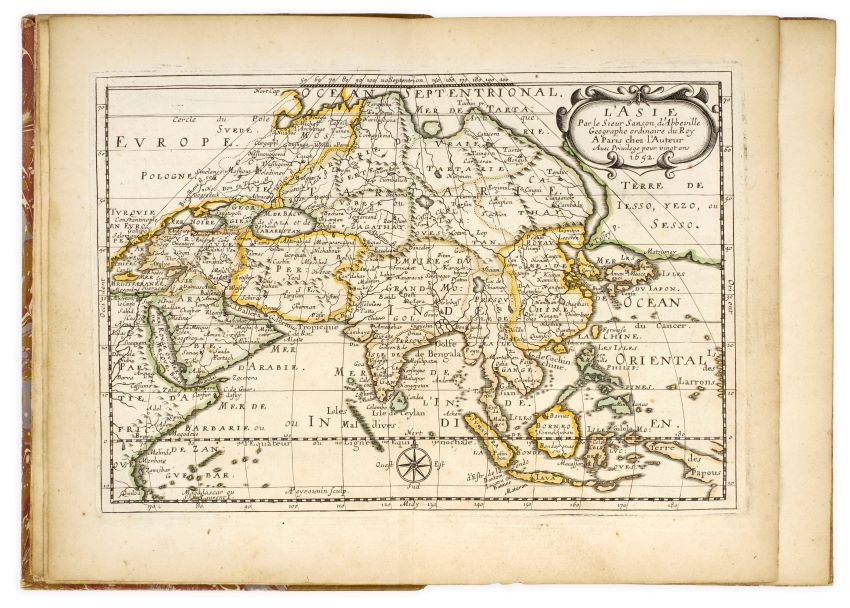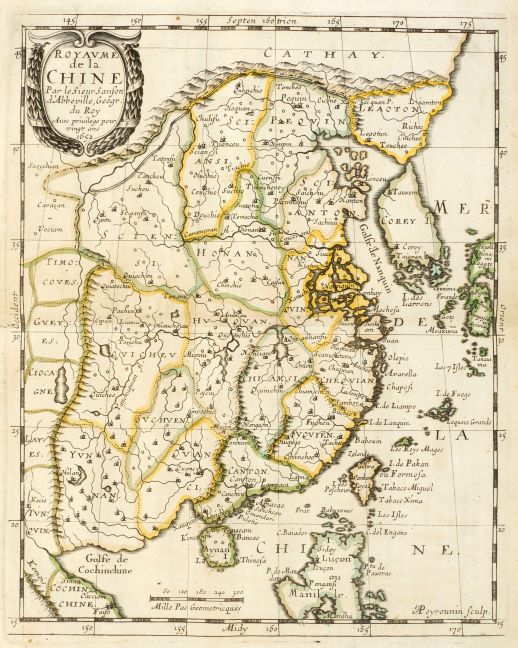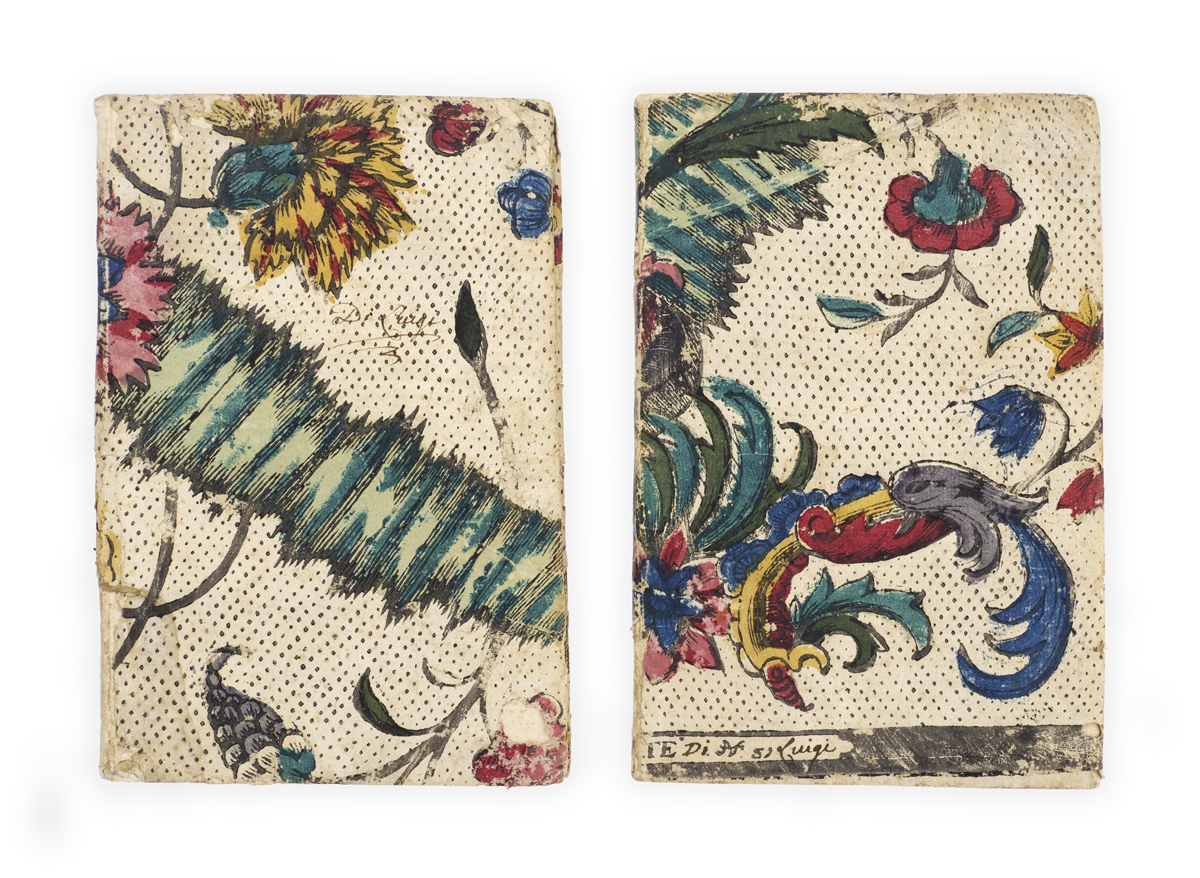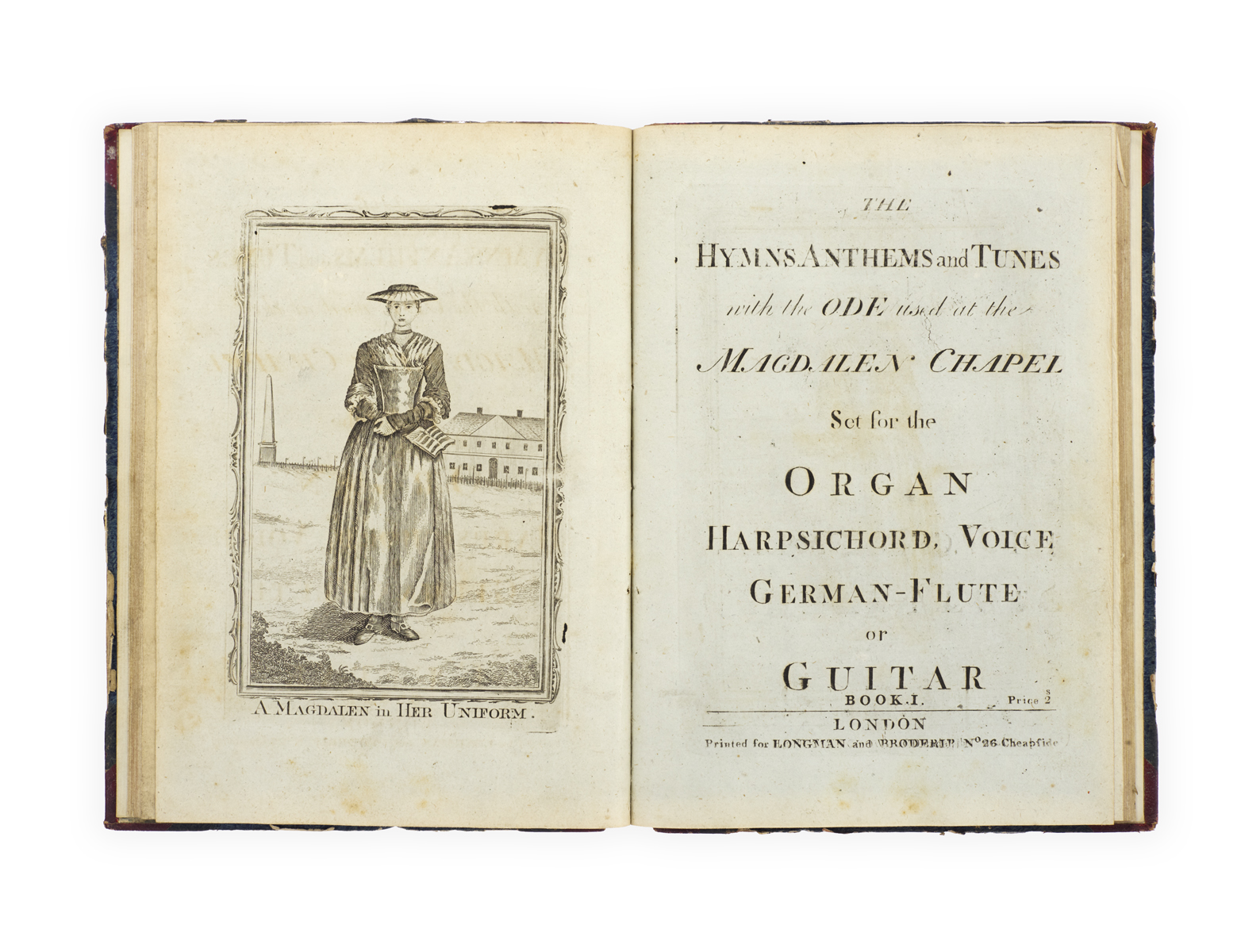

MAPPING ASIA
SANSON, Nicolas.
L’Asie en plusieurs cartes nouvelles, et exactes; et en divers traittés de geographie, et d’histoire. Là où sont descripts succinctement, et avec une belle methode, et facile ses empires, ses monarchies, ses estats, etc. les moeurs, les langues, les religions, les richesses de ses peuples, etc. Seconde edition …
Paris, for the author, 1658.
4to, pp. [6], 72, ff. 73-76, pp. 77-104; with 17 double-page maps hand-coloured in outline, woodcut initial and headpiece; perforation to last map and last two leaves affecting a few words, repairs to lower central folds of 9 maps, somewhat browned, a few marks; overall very good in modern light brown quarter calf with marbled boards, gilt lettering to spine, marbled endpapers; a little wear to corners; some marginal pencil annotations in French to p. 21.

Added to your basket:
L’Asie en plusieurs cartes nouvelles, et exactes; et en divers traittés de geographie, et d’histoire. Là où sont descripts succinctement, et avec une belle methode, et facile ses empires, ses monarchies, ses estats, etc. les moeurs, les langues, les religions, les richesses de ses peuples, etc. Seconde edition …
Scarce second edition, featuring seventeen maps of Asia by the great French cartographer Nicolas Sanson, supplemented with his notes on Asiatic geography.
Royal geographer and tutor to two French kings, Sanson ranks as one of, if not the leading French cartographer of the seventeenth century. This, his first study of Asia, was first published in 1652; it makes up perhaps the most famous of the collections published during Sanson’s lifetime, his four-part series, in quarto, depicting Europe, Asia, Africa, and America. His maps of Asia and the Far East were largely based on the information of Dutch and Portuguese travellers and Jesuit missionaries, and were important stepping-stones in the development of a more detailed European knowledge of this region. Yet Sanson’s interest in Asia was not merely a question of geographical completeness or exploration: as he pointed out in the preface, ‘Asia impatiently awaits the fulfilment of oracles, which promise that it will soon return not only under the empire of our kings but also that of Jesus Christ’. Dedicated to François Foucquet, who became archbishop of Narbonne in 1659, the seventeen maps encompass Turkey, Anatolia, Arabia, Persia, Mongolia, India, China, Tartary, Japan, the Philippines, Java, and Ceylon. They are the work of the Parisian engraver Abraham Peyrounin, who often collaborated with Sanson and with Sanson’s partner Pierre Mariette.

